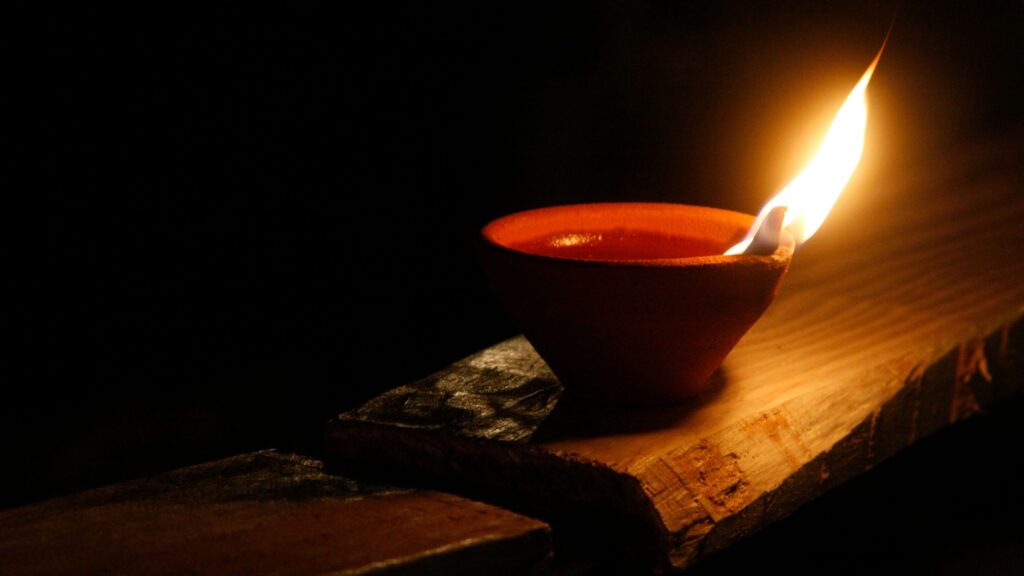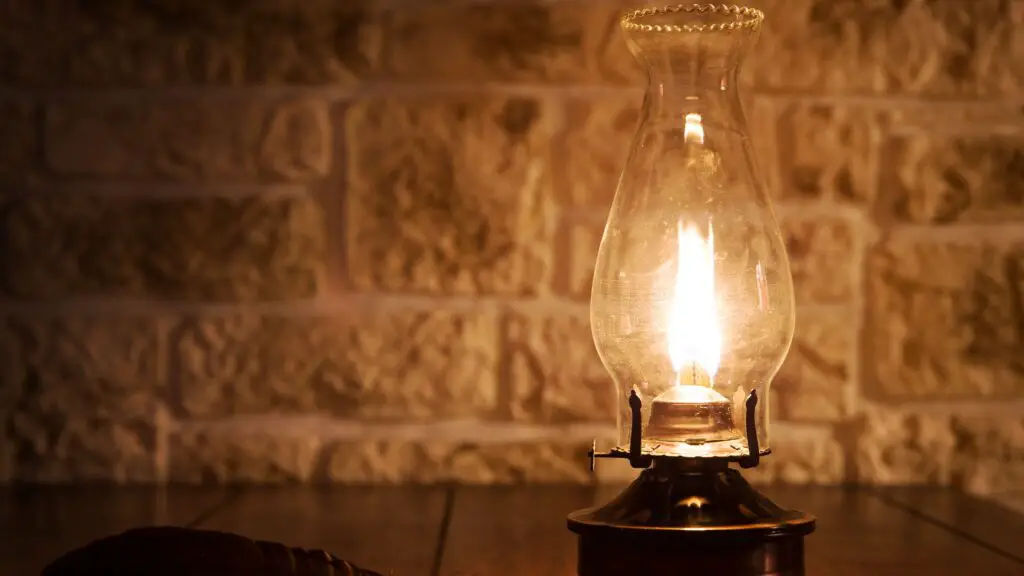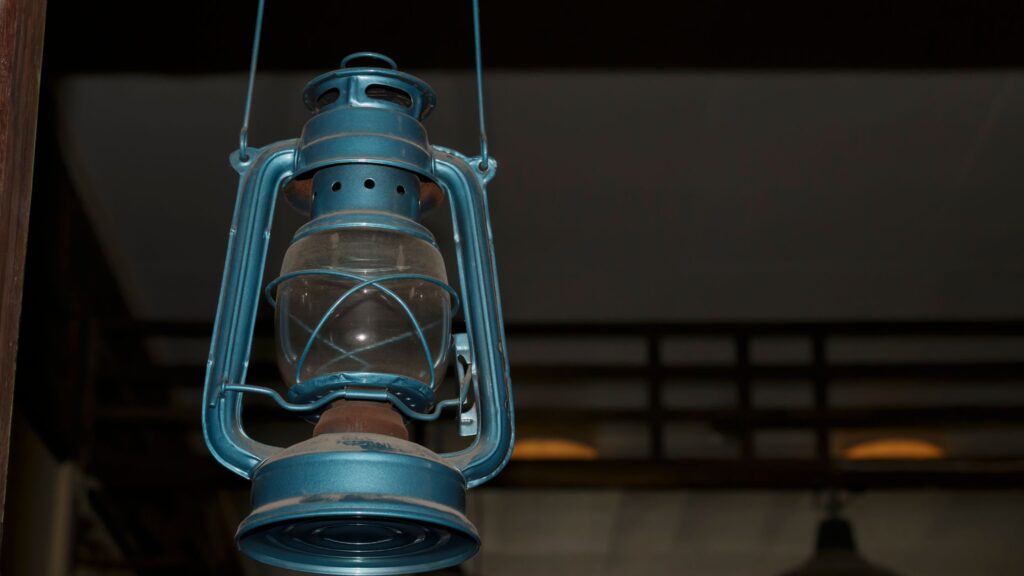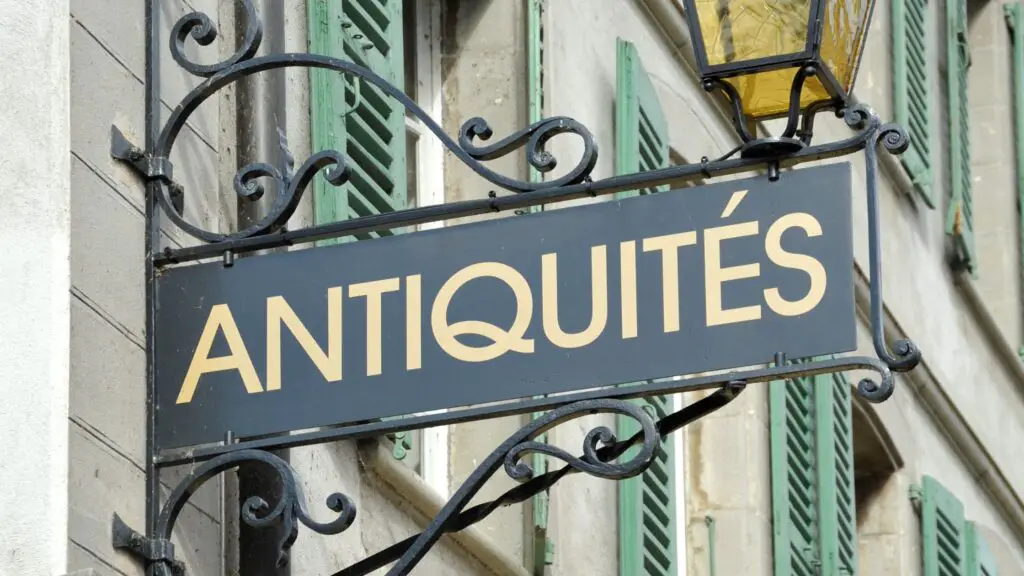In a world where modernity often takes center stage, there exists a nostalgic allure—a beckoning towards the elegance of the past, encapsulated in the timeless charm of antique oil lamps. These intriguing relics, steeped in history and craftsmanship, hold a luminescent legacy that transcends eras. Originating from ancient times, where light was a precious commodity, these lamps have evolved through centuries, weaving a narrative of innovation and functionality. Today, amidst our technologically advanced lives, the significance of antique oil lamps persists, drawing enthusiasts and collectors seeking to rediscover the nostalgic appeal, intricate designs, and historical significance embedded within these radiant artifacts. Join us as we embark on an illuminating journey to demystify the captivating world of antique oil lamps, unveiling their enduring allure and undimmed charm that continues to captivate even in our modern age.
Types of Antique Oil Lamps

Classification by Style: Exploring Diverse Designs and Patterns
Antique oil lamps encompass a rich array of styles, each boasting distinctive aesthetics reflective of the era in which they were crafted. From the ornate Victorian oil lamps adorned with intricate patterns to the simplicity of Early American designs, the diversity is enthralling. The graceful curves of Art Nouveau lamps and the geometric precision of Art Deco pieces further add to this tapestry of styles. Whether it’s the opulent cut glass patterns or the delicately hand-painted ceramic bases, antique oil lamps exhibit a craftsmanship that transcends time, offering a glimpse into the artistry of bygone eras.
Example: Consider the opulence of a late 19th-century Victorian oil lamp, featuring an intricately engraved brass base complemented by an exquisite hand-blown glass shade adorned with floral motifs. Such lamps were a symbol of status and refinement during their time, showcasing the craftsmanship and attention to detail characteristic of the Victorian period.
Materials Used: Diving into Construction Materials
Antique oil lamps are crafted from a variety of materials, each contributing to their unique allure. Glass, renowned for its translucency and versatility, was a prevalent choice, with cut glass and colored glass lamps being particularly popular. Additionally, lamps fashioned from brass, copper, or pewter, often embellished with detailed engravings, exemplify the metalwork expertise of their respective periods. Ceramic oil lamps, with their hand-painted decorations and diverse shapes, add a touch of artisanal beauty to collections. Exploring these materials not only unravels the lamp’s origin but also serves as a testament to the artisanship of earlier generations.
Example: A delicate cranberry glass oil lamp from the mid-1800s, with its elegant globe shape and hand-blown quality, showcases the mastery of glassblowing artisans. Its vibrant hue, a result of the gold chloride used in the glassmaking process, exudes a warmth and sophistication that is characteristic of the era.
Functional Varieties: Unveiling Different Lamp Mechanisms and Purposes
Antique oil lamps were not merely decorative; they were indispensable sources of light in eras predating electricity. Understanding the various mechanisms—ranging from wick adjustments to burner designs—offers insights into their functionality. Whether discussing the efficient center draft lamps, the practicality of hanging lamps, or the portability of finger lamps used for personal illumination, each type served a specific purpose tailored to the needs of its time.
Example: Explore the versatility of a dual-purpose combination lamp that could function both as an oil lamp and a candlestick. These ingenious designs showcase adaptability and resourcefulness, catering to changing lighting needs depending on the occasion or available resources.
By examining the diverse styles, materials, and functionalities of antique oil lamps, enthusiasts can gain a deeper appreciation for these historical treasures while embracing their unique characteristics and historical significance.
Identifying Authentic Antique Oil Lamps

Key Characteristics: Unveiling Telltale Signs of Genuine Pieces
Recognizing authentic antique oil lamps requires a discerning eye attuned to specific characteristics. Authentic lamps often bear distinct markers of craftsmanship, such as hand-blown glass imperfections like bubbles or irregularities, evidence of the meticulous artisanal process. Additionally, examining the base for wear patterns consistent with age and usage, and scrutinizing the materials used, aids in distinguishing genuine antique oil lamps from newer replicas.
Example: Consider an early 20th-century Aladdin lamp known for its high-quality craftsmanship. These lamps often feature a unique pattern etched on the glass or a stamped maker’s mark, signifying authenticity and adding value to the piece.
Tips for Spotting Reproductions or Fakes
With the popularity of antique oil lamps, the market has seen an influx of reproductions and counterfeits. Understanding the red flags helps in identifying inauthentic pieces. Look for uniformity in patterns or materials, which might indicate mass production. Lack of aging signs or inconsistencies in construction can also hint at replicas. Consulting experts, referencing reputable sources, and conducting thorough research are invaluable in avoiding purchasing faux antique lamps.
Example: Reproduction lamps often lack the subtle imperfections or aging signs found in genuine antique pieces. A ‘too-perfect’ appearance or materials that seem too pristine might indicate a reproduction.
Value Determinants: Factors That Influence the Worth of Antique Oil Lamps
Several factors influence the value of antique oil lamps. Rarity, provenance, craftsmanship, and condition play pivotal roles. Lamps with unique designs, historical significance, or those produced by renowned manufacturers tend to hold higher value. Moreover, lamps in pristine condition, with all original parts intact, command greater worth among collectors.
Example: An antique oil lamp manufactured by a prestigious maker during a specific period, coupled with its exceptional condition and unique design, could significantly elevate its market value, attracting serious collectors and enthusiasts.
Understanding the nuances between authentic antique oil lamps and their reproductions, as well as comprehending the determinants of their value, empowers collectors to make informed decisions and appreciate these historical artifacts with greater depth and authenticity.
Care and Maintenance of Antique Oil Lamps

Cleaning Techniques: Safely Restoring and Maintaining Lamps
Preserving the timeless allure of antique oil lamps necessitates delicate yet effective cleaning methods. Begin by gently dusting the lamp using a soft cloth to remove surface grime. For glass lamps, a mild solution of water and vinegar can be used, followed by careful rinsing and drying to restore their luster. Brass or metal parts may require specialized cleaning solutions to prevent tarnishing while retaining their original patina. However, caution is essential to avoid damaging delicate components or removing valuable aged finishes.
Example: When cleaning a tarnished brass base on an antique oil lamp, consider using a mixture of mild soap and warm water. A soft-bristled brush can help remove dirt from intricate engravings without harming the metal’s finish.
Preservation Strategies: Shielding Against Deterioration and Damage
Shielding antique oil lamps from environmental factors is crucial to maintain their pristine condition. Display lamps away from direct sunlight to prevent fading or discoloration of materials. Additionally, storing lamps in a stable environment with controlled humidity levels helps prevent corrosion or degradation of fragile components. Inspecting and addressing any issues promptly, such as loose fittings or cracked glass, can prevent further damage and preserve the lamp’s integrity.
Example: Placing an antique oil lamp in a display cabinet with UV-filtering glass doors shields it from harmful sunlight exposure while showcasing its beauty.
Expert Insights: Advice from Collectors and Restoration Specialists
Seek guidance from experienced collectors and restoration specialists to gain valuable insights into preserving and caring for antique oil lamps. Their expertise in handling delicate restoration processes, identifying potential risks, and offering tips on maintenance can prove invaluable. Collectors often share their tried-and-tested methods for preserving lamps, while restoration specialists offer professional advice on intricate repairs or refinishing techniques.
Example: An experienced collector might suggest using museum-quality display cases or investing in specialized cleaning products designed specifically for antique lamp maintenance, ensuring long-term preservation and appreciation of these cherished pieces.
By employing appropriate cleaning techniques, implementing preservation strategies, and seeking advice from experts, enthusiasts can ensure the longevity and beauty of their antique oil lamps, preserving their historical significance for generations to come.
Showcasing the Beauty of Antique Oil Lamps

Decorating with Antique Oil Lamps: Interior Design Ideas and Inspirations
Integrating antique oil lamps into interior decor infuses spaces with a nostalgic and sophisticated ambiance. Consider placing a Victorian oil lamp atop a vintage side table to add a touch of old-world charm to a living room or study. Mixing and matching lamp styles can create eclectic focal points, while strategically positioning lamps in darker corners or on mantels can highlight their radiant allure. The soft, warm glow emitted by these lamps contributes to a cozy and inviting atmosphere, elevating the overall aesthetic of any room.
Example: Positioning a brass and glass hurricane lamp on a mantelpiece amidst family heirlooms and antique photographs not only adds to the room’s visual appeal but also sparks conversations about its historical significance.
Displaying Collections: Creative Ways to Showcase Lamps
Curating and displaying antique oil lamp collections is an art in itself. Consider arranging lamps by era, style, or size on decorative shelving units or within glass cabinets to create visually captivating displays. Grouping lamps with complementary designs or colors enhances the visual impact, while incorporating accent lighting to highlight specific pieces draws attention to their intricate details. Experimenting with various display techniques allows enthusiasts to showcase their collections as stunning focal points in their homes.
Example: Creating a gallery wall featuring a collection of miniature finger lamps arranged symmetrically in ornate frames adds a touch of whimsy and elegance to a room’s decor, celebrating the diversity of lamp designs.
Stories Behind the Lamps: Anecdotes and Histories That Enhance Their Charm
Each antique oil lamp carries its unique history, often weaving fascinating tales from the past. Sharing these stories—whether about the lamp’s origins, previous owners, or the historical context in which it was used—adds depth and character to the collection. Narrating anecdotes associated with specific lamps evokes a sense of connection and appreciation, transforming these artifacts from mere decorative items into cherished pieces with rich narratives.
Example: Relating the story behind a handcrafted oil lamp that survived a bygone era’s blackout by providing light during a historic event adds a captivating layer of intrigue and significance to the lamp’s legacy.
By incorporating antique oil lamps into interior design, creatively showcasing collections, and sharing the captivating stories behind these cherished pieces, enthusiasts can amplify their appreciation for these historical artifacts while infusing their spaces with timeless elegance and narrative richness.
Where to Find Antique Oil Lamps

Antique Stores and Auctions: Prime Hunting Grounds for Collectors
Exploring local antique stores, flea markets, and auctions often unveils a treasure trove of antique oil lamps. These physical venues provide an immersive experience, allowing enthusiasts to examine lamps up close, assess their condition, and interact with knowledgeable sellers or auctioneers. Additionally, attending antique auctions or estate sales presents opportunities to discover unique pieces with historical value that may have been passed down through generations.
Example: Visiting an antique fair in a quaint town unearthed a rare Aladdin lamp tucked away in a corner stall, its pristine condition and unique design making it an exceptional find for a collector.
Online Marketplaces: Exploring Options on the Internet
Embracing the digital era, online marketplaces offer an extensive array of antique oil lamps for enthusiasts worldwide. Platforms like eBay, Etsy, or specialized antique websites showcase diverse collections from various sellers, providing access to lamps spanning different eras, styles, and price ranges. Detailed descriptions, multiple images, and seller ratings facilitate informed purchasing decisions, although careful scrutiny and research are essential to ensure authenticity when buying online.
Example: Scouring through online listings unveiled a rare hand-painted GWTW (Gone with the Wind) lamp, allowing a collector to add a piece of cinematic history to their collection.
Tips for Purchasing: Ensuring Authenticity and Value for Buyers
When acquiring antique oil lamps, certain precautions can safeguard buyers from purchasing replicas or overpriced items. Requesting additional images or information from sellers, examining seller reputations and return policies, and verifying lamp authenticity through trusted sources or experts contribute to a confident and informed purchase. Establishing a budget and conducting thorough research on comparable prices aid in evaluating the lamp’s value and negotiating a fair deal.
Example: Prior to finalizing a purchase, seeking advice from forums or connecting with seasoned collectors helped a buyer authenticate a lamp’s manufacturer mark, ensuring its genuineness before making the acquisition.
Navigating the avenues of antique stores, auctions, online marketplaces, and employing cautious purchasing strategies empower enthusiasts to expand their collections while ensuring authenticity and value in their acquisitions of antique oil lamps.
Conclusion
Antique oil lamps represent more than just historical artifacts; they are conduits to bygone eras, embodying craftsmanship, elegance, and functionality that transcend time. Their enduring appeal lies in the intricate designs, varied materials, and the stories they carry from generations past.
In our fast-paced digital world, antique oil lamps stand as reminders of a simpler yet refined past. Their timeless elegance not only enhances interior decor but also adds a touch of nostalgia and sophistication to contemporary spaces, making them cherished conversation pieces and focal points in any room.
Exploring the world of antique oil lamps opens doors to a fascinating journey—discovering unique styles, preserving history, and connecting with a community passionate about preserving these cultural treasures. Whether you’re a seasoned collector or a newcomer to the world of antiques, delving into the realm of antique oil lamps offers an enriching experience worth embracing.
As you embark on your journey to explore the world of antiquities, why not expand your appreciation for historical treasures by delving into the allure of antique coins? Discover the fascinating stories behind rare coins and their historical significance by exploring our article on antique coins. Embrace the world of antiquities and uncover the beauty and value of these timeless artifacts. Engage, explore, and let history captivate you.

Leave a Reply